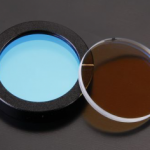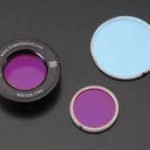
Tips on How to buy the best wave plate for your purpose
Friday, 23 December, 2016
Important Tips When Buying Waveplates
Friday, 23 December, 2016Optics (products that manipulate light) are “enabling technologies” to many applications, including industrial, military, aerospace, research, medical, and biomedical applications. Computers, cell phones, the internet, weather satellites, eye surgery, genetic research, laser-welded car chassis, and much more would be impossible without today’s precision optics.
To meet the exploding demand for optics of increasing sophistication, many companies have been established that manufacture or supply optics. Some, naturally, are better than others.
Your optics supplier and partner should be familiar with your exact needs, able to communicate “on your wavelength”, capable of verifying and delivering the product on time and to specification, and be someone with whom you can have a trusting long-term relationship.
If your needs include fast delivery, choose a partner that stocks exactly what you want in the quantities you need. They should have an extensive inventory of a broad variety of components and a user-friendly and informative catalog or web search.
If you need custom prototypes, choose a partner with experienced fabricators and knowledgeable application engineers, and a flexible production system.
If you need a dependable production supply, choose a trustworthy company with a track record: Verify their credibility and reliability through the Better Business Bureau, Dun and Bradstreet, their local Chamber of Commerce, and their reputation and longevity in the industry.
If you need certifications for European, military, or medical applications, choose a company that is ISO 9001:2008 certified, has an export license with the U.S. State Department, and is ITAR compliant.
If you need assurance that your optics meet all specifications, ensure that your optical partner is equipped with the full complement of autocollimators, microscopes, interferometers, computerized optical comparators, polarimeters, and dimensional gauging instruments necessary to the task – all calibrated traceable to NIST – and that you can request a full inspection report.
Certain precision optics require specialized instrumentation. For example, wave plates require a customized, dedicated multi-wavelength polarization retardation tester and assembly alignment devices. Only a few optical component suppliers have these capabilities.
Finally, their return policy should be agreeable. You should be able to return all products (with authorization) for at least 15 days after delivery, and receive a replacement part if the wrong product is shipped to you or if it does not meet the agreed-upon specifications. If you choose to return products without defects, you should be able to do so easily, and with no more than a 20% restocking fee.



